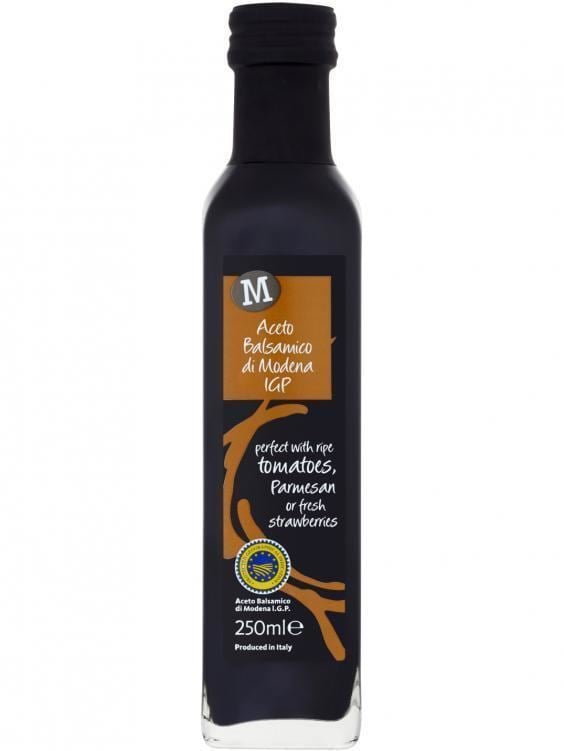 | ||
Similar Vinegar, Vinaigrette, Parmigiano‑Reggiano, Basil, Arugula | ||
Making balsamic vinegar
Balsamic vinegar (Italian: aceto balsamico) is a kind of vinegar inspired by traditional products from Italy.
Contents
- Making balsamic vinegar
- how do they do it traditional balsamic vinegar of modena
- Classifications
- Aceto Balsamico Tradizionale
- Condimento grade balsamic vinegar
- Balsamic Vinegar of Modena
- Traditional processes
- Uses
- References
The original, costly, traditional balsamic vinegar (Aceto Balsamico Tradizionale), is made from a reduction of cooked white Trebbiano grape juice, and used as a condiment. It has been produced in Modena and Reggio Emilia since the Middle Ages, being mentioned in a document dated 1046. Appreciated in the House of Este during the Renaissance, it is highly valued by modern chefs and gourmet food lovers.
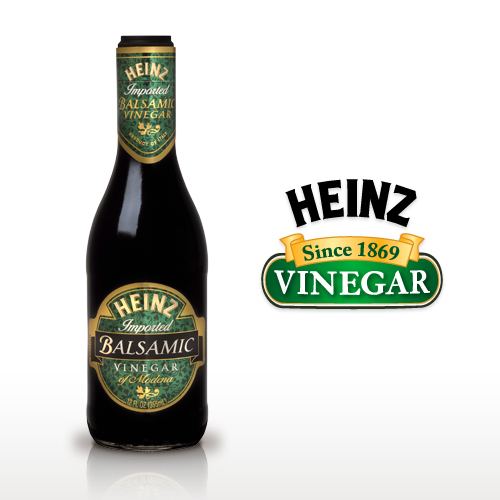
Balsamic Vinegar of Modena (Aceto Balsamico di Modena), an inexpensive imitation, is today widely available and much better known. It bears a Protected Geographical Status label, and is the kind commonly found on restaurant tables and used in salad dressing.
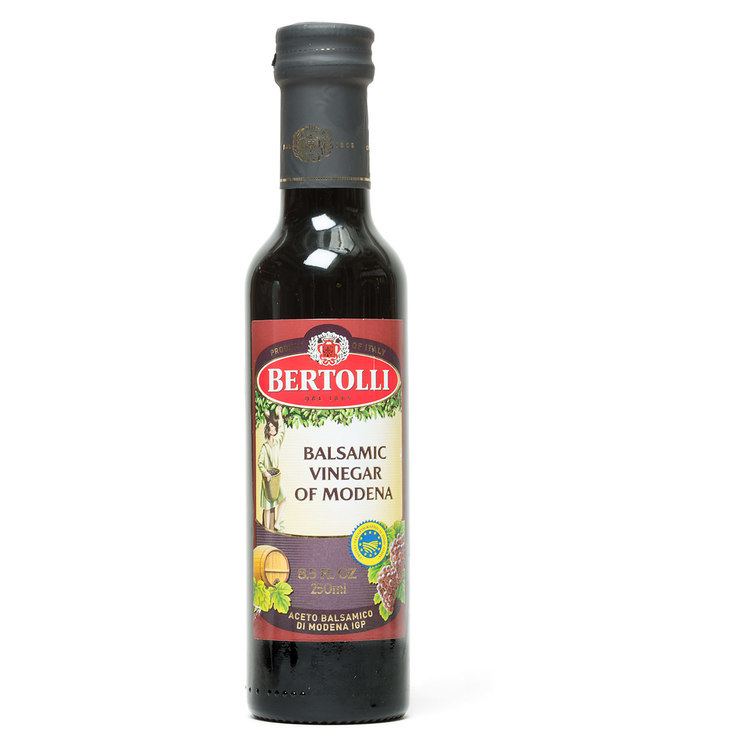
The names "Aceto Balsamico Tradizionale di Modena" (Traditional Balsamic Vinegar of Modena) and "Aceto Balsamico Tradizionale di Reggio Emilia" (Traditional Balsamic Vinegar of Reggio Emilia) are protected by both the Italian Denominazione di origine protetta and the European Union's Protected Designation of Origin.
Balsamic vinegar contains no balsam. The word balsamico (from Latin balsamum, from Greek βάλσαμον) means "balsam-like" in the sense of "restorative" or "curative".
how do they do it traditional balsamic vinegar of modena
Classifications
There are three types of balsamic vinegar:
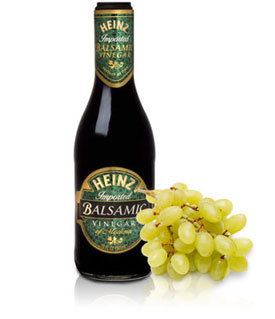
Aceto Balsamico Tradizionale
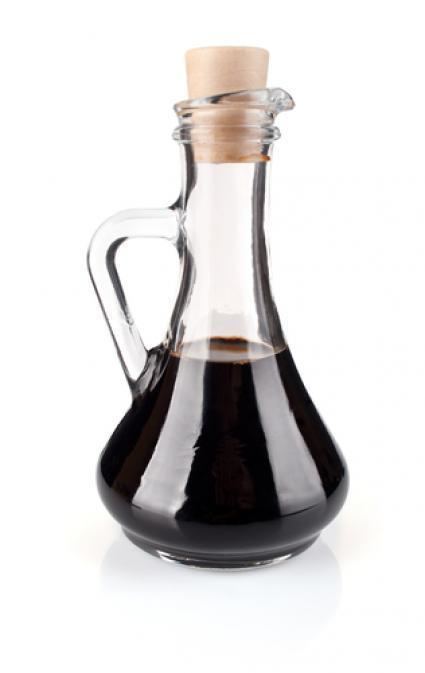
Only two consortia produce true traditional balsamic vinegar, Modena and neighboring Reggio Emilia. True balsamic vinegar is made from a reduction of pressed Trebbiano and Lambrusco grapes. The resulting thick syrup, called mosto cotto in Italian, is subsequently aged for a minimum of 12 years in a battery of several barrels of successively smaller sizes. The casks are made of different woods like chestnut, cherry, oak, mulberry, ash and juniper. True balsamic vinegar is rich, glossy, deep brown in color, and has a complex flavour that balances the natural sweet and sour elements of the cooked grape juice with hints of wood from the casks.
Reggio Emilia designates the different ages of their balsamic vinegar (Aceto Balsamico Tradizionale di Reggio Emilia) by label colour. A red label means the vinegar has been aged for at least 12 years, a silver label that the vinegar has aged for at least 18 years, and a gold label designates that the vinegar has aged for 25 years or more.
Modena uses a different system to indicate the age of its balsamic vinegars (Aceto Balsamico Tradizionale di Modena). A white-coloured cap means the vinegar has aged for at least 12 years and a gold cap bearing the designation extravecchio (extra-old) shows the vinegar has aged for 25 years or more.
Condimento grade balsamic vinegar
Condimento (dressing) balsamic vinegars may be labeled as condimento balsamico, salsa balsamica or salsa di mosto cotto. Condimento balsamic vinegar may be made in any of the following ways:
As there are no official standards or labeling systems to designate condimento balsamic vinegars, it can be hard to tell their quality based on the packaging alone.
Balsamic Vinegar of Modena
These commercial-grade products imitate the traditional product. They are made of wine vinegar with the addition of colouring, caramel and sometimes thickeners like guar gum or cornflour to artificially simulate the sweetness and thickness of the aged Aceto Balsamico Tradizionale di Modena. To meet IGP status it requires a minimum aging period of two months, not necessarily in wooden barrels, rising to three years when labeled as invecchiato (aged). As the manufacturing process is highly industrialized, the output of a medium-sized producer may be hundreds of litres per day.
Traditional processes
Traditional balsamic vinegar is produced from the juice of just-harvested white grapes (typically, Trebbiano grapes) boiled down to approximately 30% of the original volume to create a concentrate or must, which is then fermented with a slow aging process which concentrates the flavours. The flavour intensifies over the years, with the vinegar being stored in wooden casks, becoming sweet, viscous and very concentrated. During this period, a portion evaporates: it is said that this is the "angels' share", a term also used in the production of bourbon whiskey, scotch whisky, wine, and other alcoholic beverages.
None of the product may be withdrawn until the end of the minimum aging period of 12 years. At the end of the aging period (12, 18, or 25 years) a small portion is drawn from the smallest cask and each cask is then topped up with the contents of the preceding (next larger) cask. Freshly reduced cooked must is added to the largest cask and in every subsequent year the drawing and topping up process is repeated. This process where the product is distributed from the oldest cask and then refilled from the next oldest vintage cask is called solera or in perpetuum.
Consortium-sealed Tradizionale balsamic vinegar 100 ml bottles can cost between US$150 and $400 each.
Uses
Commercial-grade balsamic vinegar is used in salad dressings, dips, marinades, reductions, and sauces.
In Emilia-Romagna, tradizionale vinegar is most often served in drops on top of chunks of Parmigiano Reggiano and mortadella as an antipasto. It is also used sparingly to enhance steaks, eggs, or grilled fish, as well as on fresh fruit such as strawberries and pears and on plain crema (custard) gelato. Tradizionale vinegar may be drunk from a tiny glass to conclude a meal.
Contemporary chefs use both tradizionale and condimento vinegars sparingly in simple dishes where the balsamic vinegar's complex tastes are highlighted, using it to enhance dishes like scallops or shrimp, or on simple pastas and risottos.
